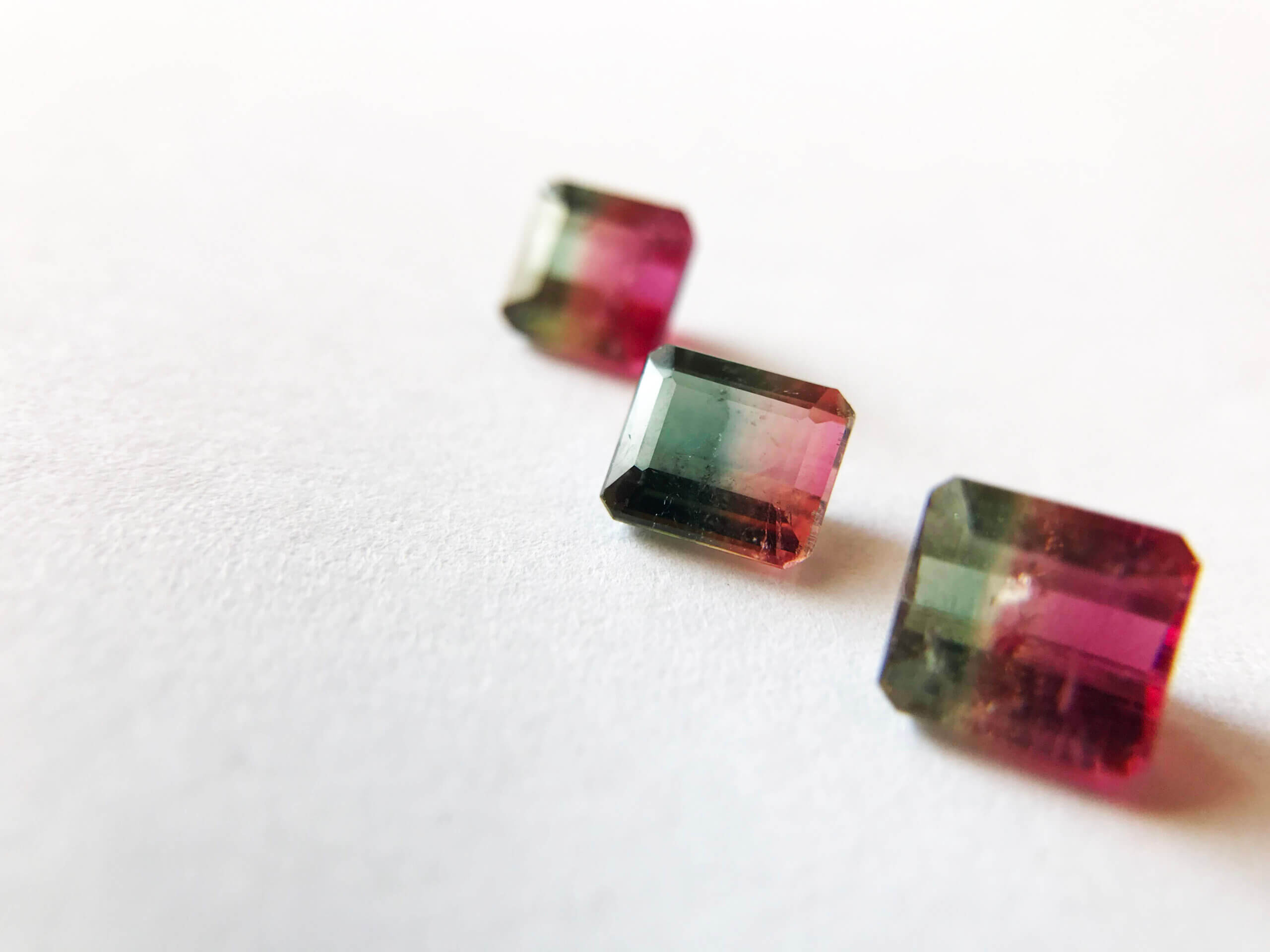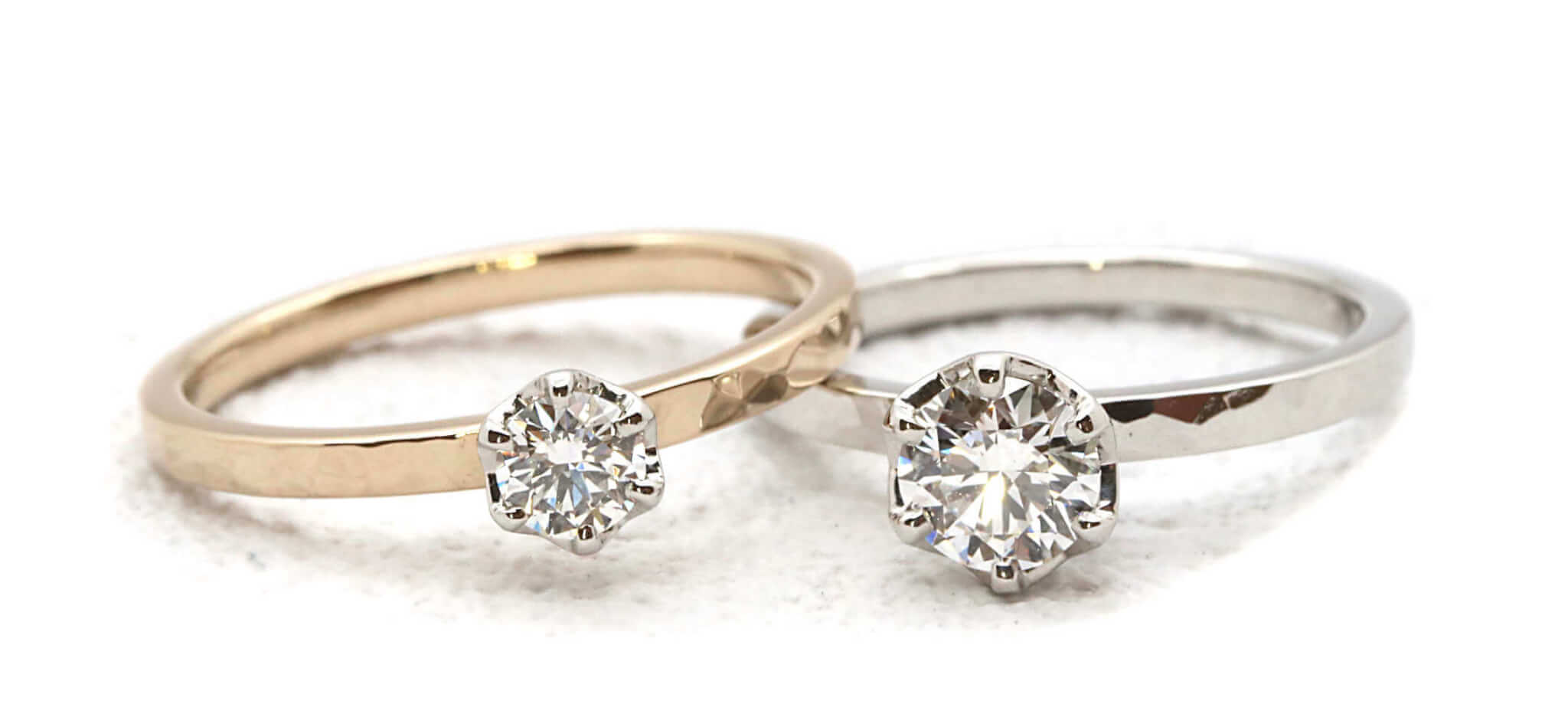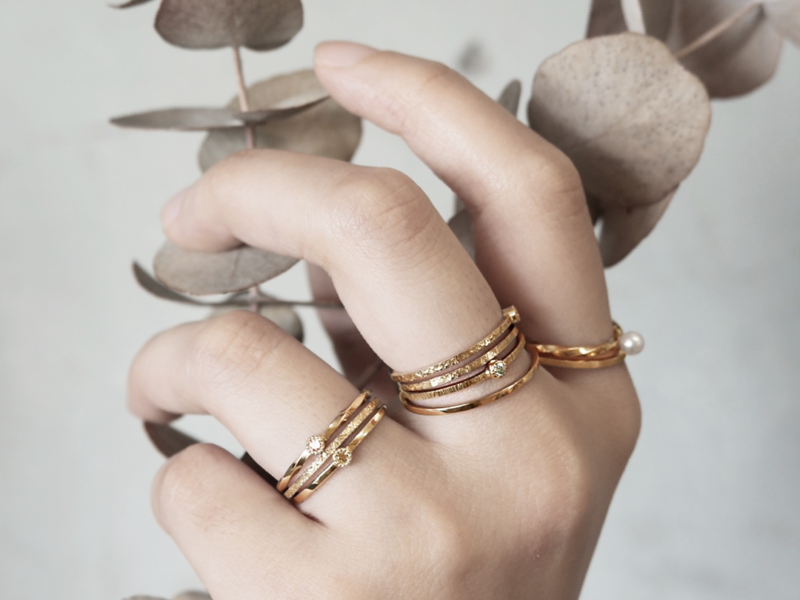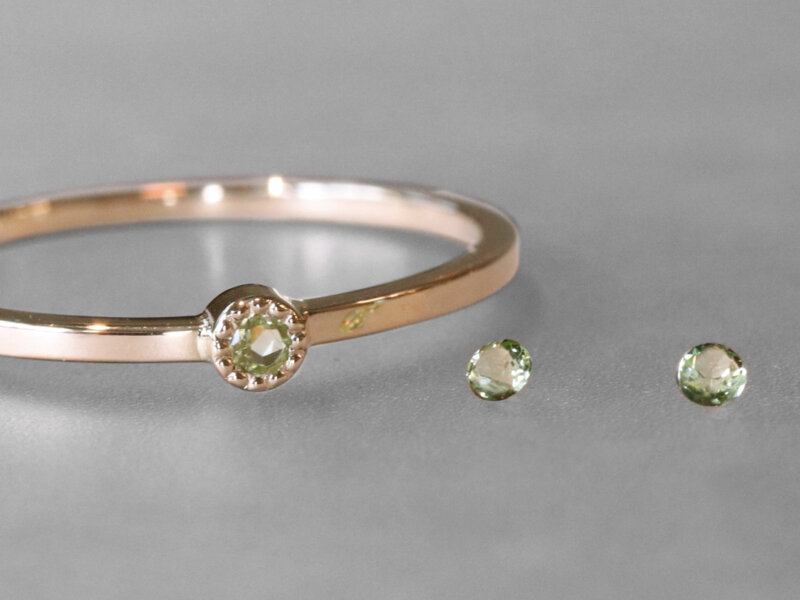The birthstone for October is tourmaline.
I would like to talk about tourmaline, the birthstone for October.
Tourmaline is the birthstone for October, the same as opal.
Tourmaline as an ore
Tourmaline Features
Its Japanese name is "Denkiishi," which means "electric stone." It has a Mohs hardness of 7 to 7.5, no wall sharpness, and a toughness of 5 to 6, making it a softer gemstone than rubies and sapphires.
Tourmaline is one of the most multicolored of the various colored gemstones, and high quality tourmaline is characterized by its high transparency and vivid hues. Its crisp coloring, also known as neon color, attracts the viewer's eye.
Origin of Tourmaline's Name
The name tourmaline comes from the Sinhalese word "tura mali" meaning "gravel" or "mixed gemstone" in the language of Sri Lanka.
Tourmaline comes in a variety of colors: red, pink, orange, yellow, green, blue, and purple. Until the 18th century, when gemology was not so well developed, green tourmaline was often mistaken for emerald. It is said that until tourmaline was recognized as a separate stone, it was also confused with rubies, sapphires, emeralds, and other colored stones.
Today, with improved gem identification technology, it is not easy to mistake gemstones for other gemstones, but it is interesting to note that different colors are given different names when they appear on the market. Red is called "rubellite," yellow "canary tourmaline," green "chrome tourmaline," neon blue "Paraiba tourmaline," and indigo blue "indigoite.
Secret of tourmaline color
The reason why such a wide range of hues are produced is largely due to the characteristics of tourmaline ore.
The mineral name of tourmaline is directly tourmaline. Tourmaline is the name of a group of minerals that share a common crystal structure. Because of its diversity, tourmaline is said to be available in all colors.
Many minerals are collectively called tourmaline, including lithiaelectricite, riddikoteite, maficite, ubite, and ferroelectricite, but the majority of gemstones are said to be "elbaite" (lithiaelectricite).
Tourmaline varies in color due to the different components contained within.
It is said to be yellow when it contains magnesium (Mg), green when it contains chromium (Cr), and blue in rare cases when it contains copper (Cu). Since tourmaline is originally a gemstone made up of a group of several minerals, its composition, content, and color vary accordingly. This is what makes tourmaline so uniquely colorful and attractive.
Bicolor tourmaline (party color)
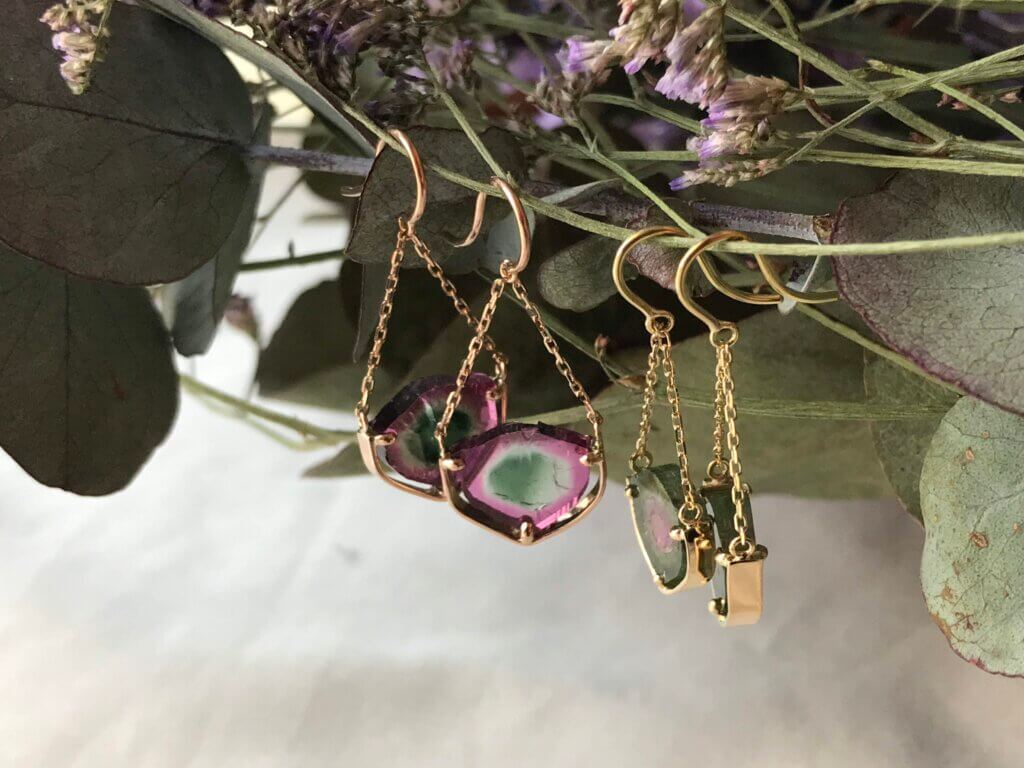
The colorful gemstones are also attractive because of the multiple colors that beautifully appear in a single gemstone, "a colorful gemstone that is a perfect match for the colorful gemstones.Bicolor (aka party color, mixed color)) tourmaline" also exists.
The gemstone is usually composed of two or three different colors, and the colors are clearly separated, as if straight lines have been drawn.
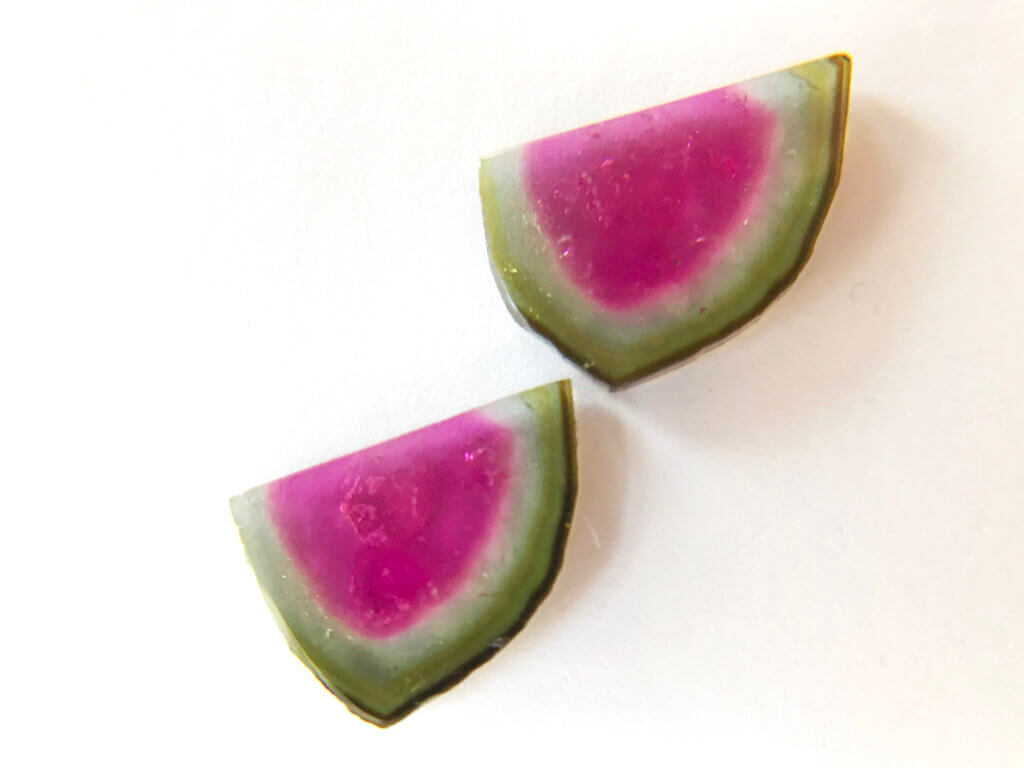
Tourmaline gemstones are produced from the host rock in the form of columns, but there are some that are red on the inside and green on the outside. The color of tourmaline is called "watermelon" because it resembles the fruit watermelon.watermelon tourmalineIt is called "the
In addition to red (pink) and green, there are also blue and yellowish shades, but they are relatively rare. Bicolor tourmaline is a gemstone that makes the most of tourmaline's unique multicolor characteristics. Since no two stones are alike, the quality of a stone depends on its color and transparency, but ultimately it is a matter of personal preference. One of the charms of tourmaline is that there is a gem with a mischievous and cute name, "water melon.
Tourmaline, as its Japanese name "electric stone" implies, is electrically charged even by slight heating or friction (pyroelectricity and piezoelectricity), and is said to generate static electricity and attract pride. Tourmaline is a stone with a different charm from other gemstones.
Tourmaline, a gemstone whose name changes depending on its color
Tourmaline, which is highly polychromatic, is marketed under various names depending on its different colors.
Red-colored tourmaline rubellite
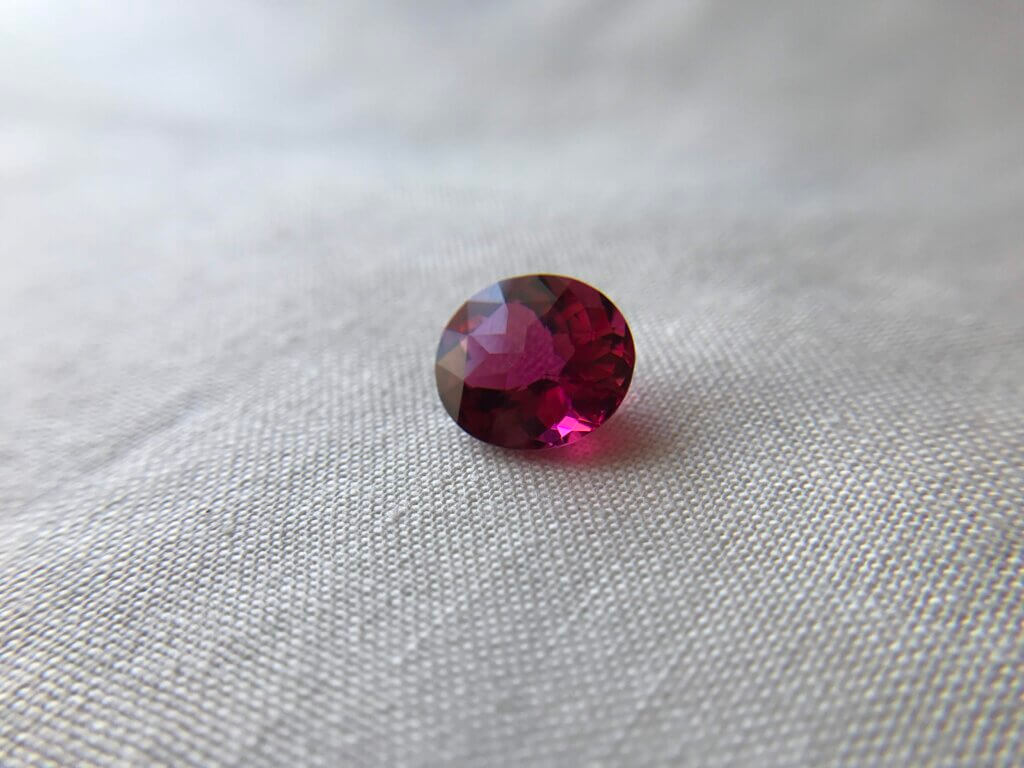
Red tourmaline is called "rubellite," which, like ruby, is derived from the Latin word "ruber," meaning red. Light, by the way, means "stone.
Those with high manganese content develop a beautiful red color and are called rubellite, while those with low manganese content are pink and are called pink tourmaline.
The highly regarded shades are called pigeon blood, like rubies, or deep cranberry, and were often mistaken for rubies in the past.
Yellow tourmaline and canary tourmaline
Yellow tourmaline is called "canary tourmaline," and its name comes from the bird canary. It has a short history and has been distributed under this name since the beginning of the 2000s.
It is said to have small amounts of manganese, magnesium, and titanium, and to be low in iron, which gives it this color. It is also a rare color that is rarely found in circulation.
Indigo Tourmaline Indigo Light
Indigo tourmaline is called "Indigolite" and has a complex deep hue that is different from the usual blue, consisting of indigo blue, which is also well known for its denim color. Indigolite produced in the Brazilian state of Minas Gerais is often of high quality, and its hue is said to vary depending on the iron content.
Paraiba tourmaline
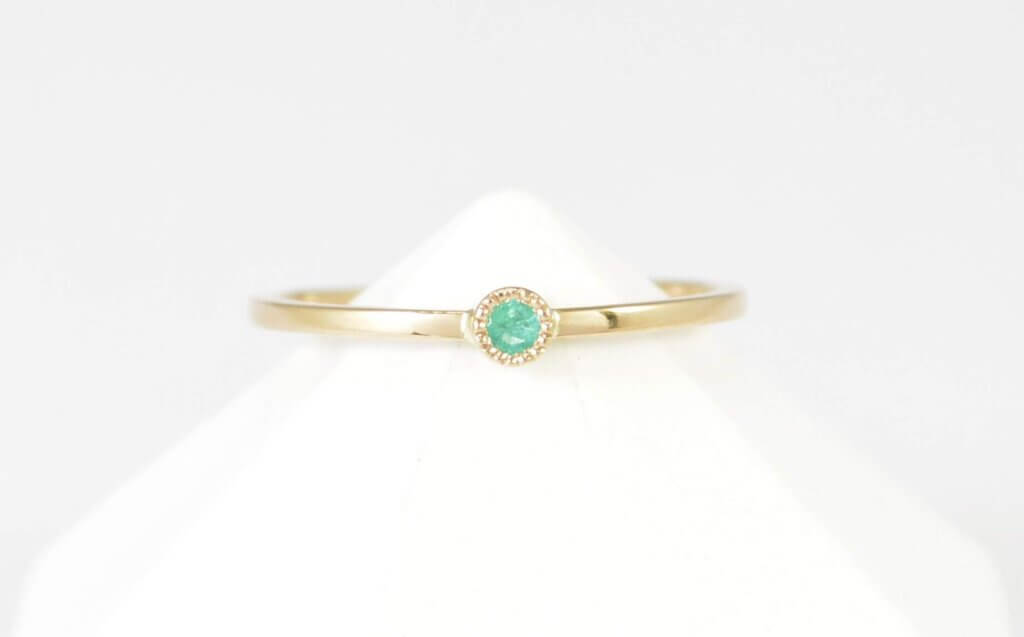
Among tourmalines of various colors, the one that has attracted the most attention in recent years is called "neon blue" (also known as illumination color), which has an exquisite transparency and a uniquely brilliant blue color.Paraiba tourmalineIs. There is a wide range of hues from green to greenish blue to blue. Among them.neon blueandTurquoise BlueTourmaline is particularly popular for its bright color, which is said to be
As mentioned earlier, the majority of tourmaline used as a gemstone is said to be "elbaite" (lithiaite), and it is said that one of its components, iron, replaces copper in the earth, resulting in this neon blue color.
This strong color produced by the high copper content, also known as illumination color, attracted buyers and collectors from all over the world.
The history of Paraíba tourmaline is new among gemstones, and it is believed that it got its name from its discovery in the 1980s in the village of Baraura, Paraíba state, northeast of Brazil.
It was mined in earnest for a year in 1989, but has since been depleted, making it a very precious gemstone. Since then, production has been confirmed from the nearby Brazilian state of Rio Grande do Norte, as well as from the African states of Mozambique, Nigeria, and Namibia, but it is said that the quality and beauty of the gemstones are not as good as those from the Brazilian state of Paraíba.
The name Paraiba tourmaline originally came from the place of origin, but now refers to this coloring. Neon blue tourmaline due to the copper element can now be named Paraiba tourmaline, regardless of its place of origin.
Even now that supply is low, attention is only increasing, so it is safe to say that values will not decline in the future.
Handcraft your own jewelry with tourmaline
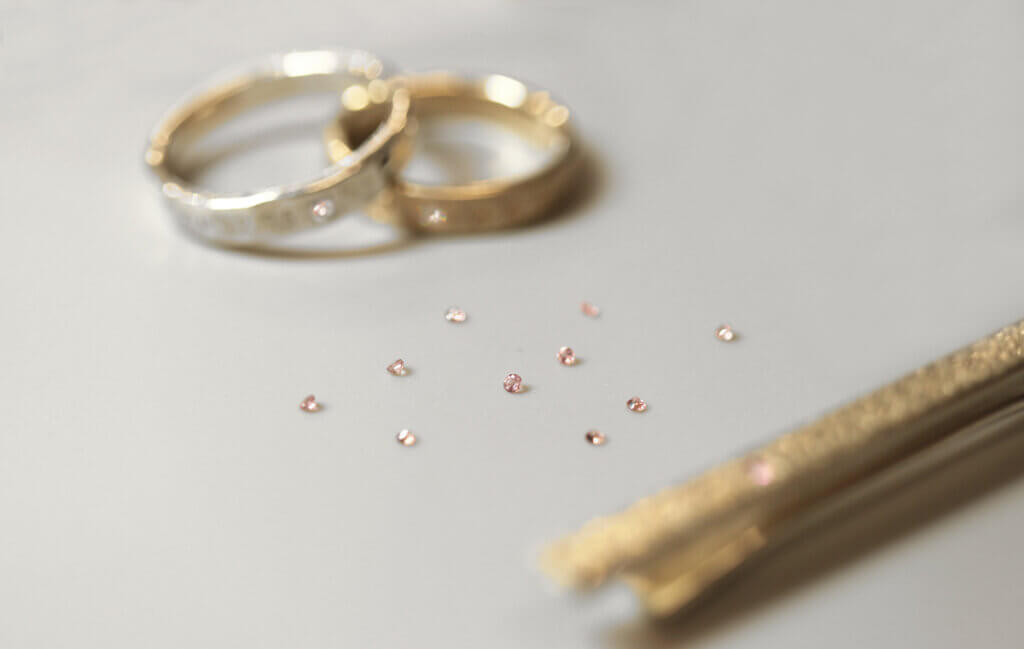
At MITUBACI, rings, pendants, and bangles made in workshops can also be fastened to wedding and engagement rings. In addition, birthstone rings carefully crafted by our artisans use large stones whose beauty can be strongly appreciated.
At MITUBACI, each natural pink tourmaline is carefully fastened by craftsmen who carefully assess the condition of each piece. The deep pink color gives an autumnal and mature impression. It is good to wear it in the front, but it is also attractive to wear it inside as a secret gemstone for your own personal charm.
Why not experience the mysterious charm of colorful tourmalines created by nature?
